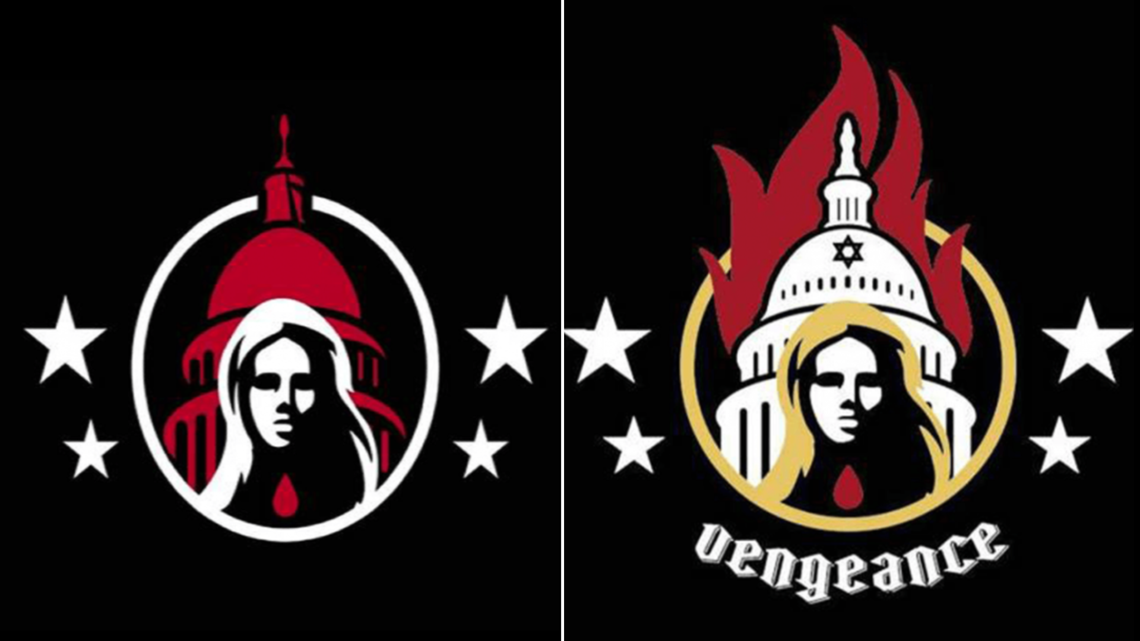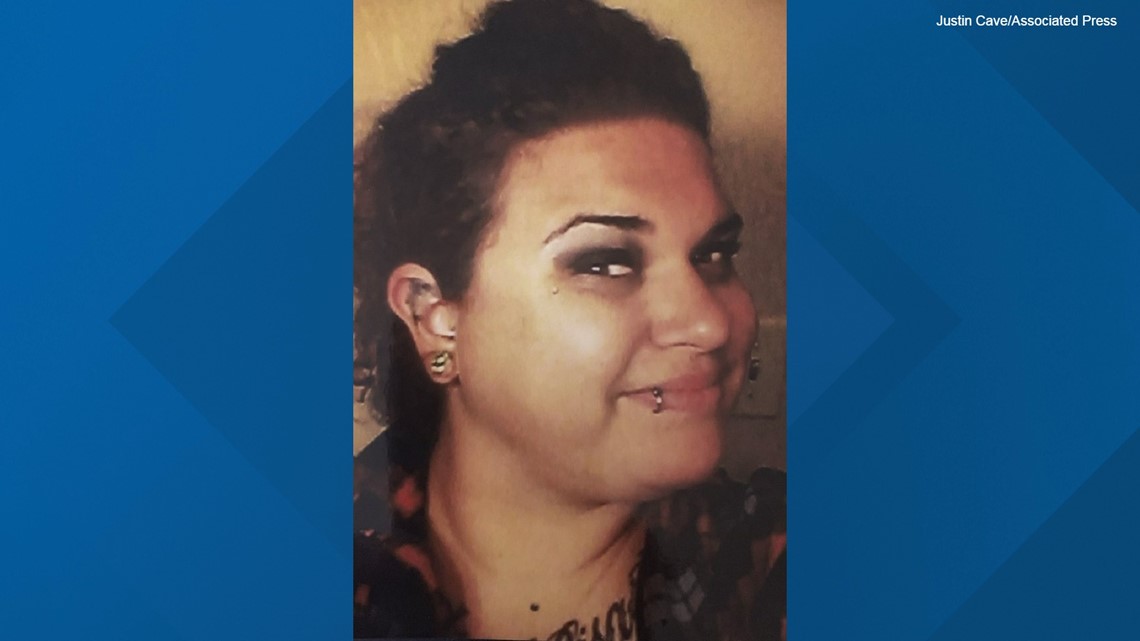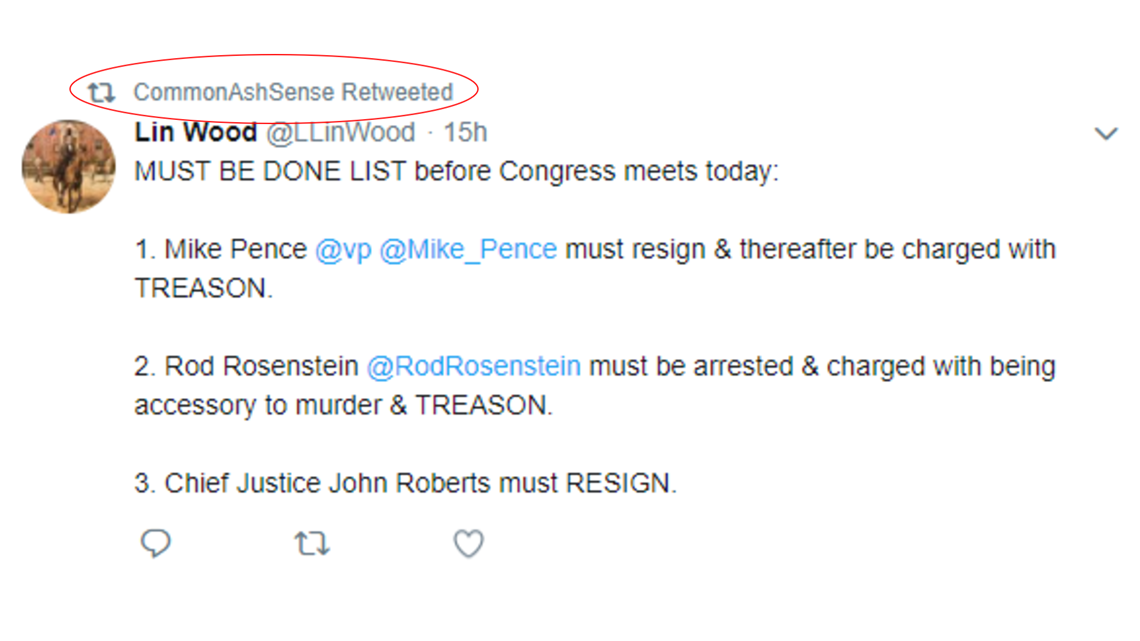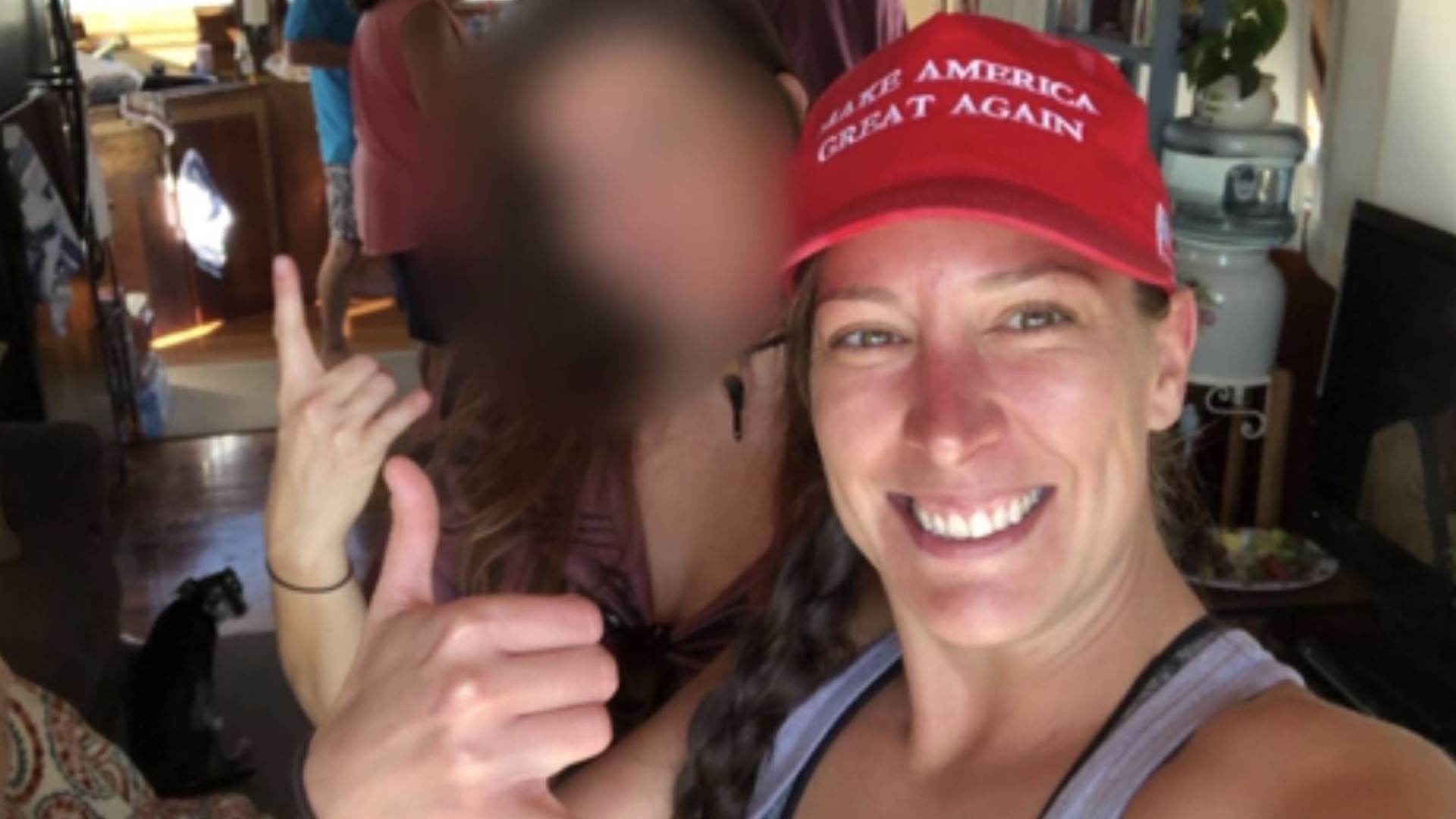WASHINGTON — Before they even knew her name, members of the extremist groups who helped fuel the Capitol riot recognized that Ashli Babbitt’s death could become a rallying cry.
“Trying to find the name of a woman that was gunned down by Capitol Police today,” Larry Brock wrote on Facebook. “She was unarmed and is the first Patriot Martyr in the Second American Revolution.”
Brock, who the Justice Department says is a self-identified Texas Oath Keeper and Three Percenter, was one of the roughly 50 rioters who breached all the way into the Senate Chamber. Wearing body armor, a combat helmet and a patch from his time in the U.S. Air Force, Brock was captured on video telling other rioters they needed to win the “information war.” A short time later, he was one of the first to claim Babbitt as a martyr for his cause.


Babbitt was a 35-year-old veteran of the Air Force herself – although, unlike Brock, there’s no evidence she was a member of any organized extremist groups. After serving four deployments overseas, Babbitt eventually moved to California with her husband, Aaron. There they owned a pool business together.
An avid supporter of former President Donald Trump, Babbitt flew alone to D.C. on January 5 to participate in his “Stop the Steal” rally the following day. When hundreds of rioters pushed past police lines and entered the U.S. Capitol Building, she entered with them. Video captured by an activist named John Sullivan, who streamed under the name “Jayden X,” shows Babbitt at the front of a crowd of rioters using poles and other objects to attempt to break open a barricaded set of doors leading to the Speaker’s Lobby – a short distance behind which members of Congress were sheltering. The video shows Babbitt was the first rioter to try to climb through a broken window, at which point a Capitol Police officer behind the barricaded doors fired a single shot. The bullet struck her in her left shoulder, according to a report from the D.C. Medical Examiner's Office. She died a short time later at Washington Hospital Center.
Within days of her death, Babbitt’s name and image had been co-opted by extremist groups across the spectrum. Users on the social media sites Parler and Telegram began circulating an image of the so-called “Babbitt Flag” which, according to the Anti-Defamation League, features a woman in front of the Capitol dome with a single drop of blood on her neck, where it was initially believed Babbitt was shot.


In another version of the flag, a Star of David appears on the Capitol dome – an anti-Semitic signal, the ADL says, to a conspiracy theory that Jews control the U.S. government.
In April, an investigation by the Justice Department found no grounds on which to charge the officer for Babbitt’s shooting, but that hasn’t satisfied her husband – who is currently suing to learn the officer’s name – or a growing chorus of voices in both the far and mainstream right-wing who have taken up Babbitt’s cause.
A Useful Story
While Babbitt has been the only one to remain in the spotlight, four Trump supporters actually died at the U.S. Capitol on January 6. The D.C. Medical Examiner’s Officer determined two men, 55-year-old Kevin Greeson and 50-year-old Benjamin Phillips, died of complications from hypertensive heart disease. And, although video appeared to show her falling and being trampled by the pro-Trump mob, the medical examiner determined a second woman, 34-year-old Rosanne Boyland, died as a result of acute amphetamine intoxication.
Just a year younger than Babbitt, on paper the two share a number of similarities. They were both “fanatical” supporters of Donald Trump, according to their families. And, in the weeks prior to the Capitol riot, both women had descended into obsession with the Pizzagate and QAnon conspiracy theories – which hold, among other things, that President Joe Biden is part of a child sex cabal that runs the U.S. government.


Before she traveled to Washington, D.C., on January 6, Boyland had told her family she’d been learning about QAnon on YouTube. A childhood friend told the New York Times Boyland had been trying to spread the word about “underground pedophile rings.”
“She thought she was fighting for children, in her own way,” Sydney Vinson told the Times.
On her own social media accounts, Babbitt spend the weeks leading up to the riot sharing QAnon phrases like “WWG1WGA” (which stands for “where we go one, we go all”) and predicting that “the storm” was coming to D.C. “The storm” is a central part of the QAnon conspiracy, representing the day that Trump would initiate the mass arrest of Democrats.
In the days immediately before January 6, Babbitt had also retweeted Trump attorney Lin Wood dozens of times, including tweets alleging that Chief Justice John Roberts was being blackmailed in a global scheme involving the “rape and murder of children.”


Just hours before the Capitol riot, the archive shows that Babbitt retweeted another Wood post calling for Vice President Mike Pence to resign and be charged with treason.
But in the six months since the riot, Boyland’s name has faded from view – not because she believed in Trump or the QAnon conspiracy theory any less than Babbitt, according to Alex Friedfeld, but because her story simply isn’t as useful.
Friedfeld is an investigative researcher at the Anti-Defamation League’s Center on Extremism. He previously served as an intelligence research specialist with the New York City Police Department’s Terrorism Threat Analysis Group.
“What’s important to highlight here is the glorification of Ashli Babbitt and her death is not actually about her. It’s about the narrative,” Friedfeld said. “There were other people who died that day. But we have not seen their stories used in the same way as Ashli Babbitt’s because it did not fit the us-vs-them narrative that hers so clearly does. And so they have largely been forgotten or ignored, while Babbitt has been turned into a symbol in order to advance the cause.”
One Woman, Many Narratives
“In the immediate aftermath, we saw a wide variety of groups latch on to her name and her story in order to advance their agendas,” Friedfeld said. Those groups each had different agendas – but in Babbitt, he says, they found a pliable image.
For anti-government extremists, Babbitt became a patriot who was fighting against government tyranny in order to free the American people when she was executed by government agents. On Telegram channels used by the Proud Boys and other groups, the ADL says an image began circulating listing Babbitt’s name next to other right-wing martyrs like Vicki Weaver – who was killed by federal agents in a 1992 shootout at Ruby Ridge – and LaVoy Finicum, a cattle rancher who was shot and killed by police after joining in the armed occupation of the Malheur National Wildlife Refuge led by Ammon Bundy in 2016.
“[Her story] fits this narrative that they have used for decades, which is that if you go against the government, they will hurt your or they will kill you,” Friedfeld said.
In Babbitt, white supremacists have found a useful image as well. Although there is no evidence to date that Babbitt was a member of any white supremacist groups or harbored any racially-motivated ideologies herself, that hasn’t stopped groups like the white supremacist National Partisan Movement from embracing her story. In one post on Telegram, according to the ADL, Babbitt’s face appears under the text “Rest in White Power.” The image goes on to claim Babbitt was “murdered in cold blood by Zionist scum.”
“In their minds, here was a white woman who, again, was killed by the government,” Friedfeld said. “And so it shows that there’s evidence of a white genocide.”
Mainstream figures on the right have rallied to Babbitt as well. One of the first Republicans to take up her cause publicly was Rep. Paul Gosar (R-Ariz.). Gosar – a staunch Trump ally who headlined the white nationalist America First Political Action Conference in April – was the first member of Congress to vote to object to certifying Electoral College votes on January 6. During a hearing with former acting Attorney General Jeffrey Rosen in April, Gosar claimed Babbitt was “executed.” On July 6, when many in D.C. were marking six months since the riot, Gosar put out a statement titled “Who Killed Ashli Babbitt?” In it, he claimed there was a “cover-up” surrounding her death and called her shooting “street justice.” Gosar's office did not respond to requests for comment on this story.
Babbitt’s shooting has since become a cause célèbre for Fox News host Tucker Carlson and most recently for Trump himself. On July 1, Trump made a one-sentence post to his blog asking, “Who shot Ashli Babbitt?” Since then, Trump has spoken of her repeatedly, including sharing discredited conspiracy theories about the officer who shot her being head of security for a high-ranking Democrat. Capitol Police have said the officer was not assigned to a private security detail for any member of Congress on January 6.


A Distraction, An Opportunity
Even as new cases continue to be filed weekly in connection with January 6, Republicans like Gosar and Trump remain fixated on the Babbitt shooting. That’s just a simple political equation, according to Brian Hughes, a professor of law and criminology and the associate director of the Polarization and Extremist Research Lab (PERIL) at American University.
“By turning her into a hero, it helps to justify what was an unjustifiable action,” Hughes said. “The assault on the Capitol was a very serious crime. It was a crime against our democratic process that has to be restated again and again, and it was inexcusable. However, if Ashli Babbitt is turned into a sort of self-sacrificing figure, if she can be turned into a kind of patriot martyr by these individuals in these groups, then that serves to justify what was unjustifiable.”
For extremist groups, many of which have seen themselves kicked off social media and booted from crowdfunding sites since January 6, Babbitt also provides a new opportunity to get their ideologies in front of new eyeballs that might not otherwise see them. At the ADL, Friedfeld said researchers are seeing a concerted effort by extremists to capitalize on the attention mainstream right-wing figures are bringing to Babbitt’s name.
“All of these extremists are using the story of Ashli Babbitt in order to try and garner recruits to their cause,” Friedfeld said. “So they take her story, knowing that it’s going to be high profile and a lot of people are going to be looking for information about it and they use that to attract people to look at their take on it. The idea being that they will come for the Ashli Babbitt stories, but then get exposed to other ideas – white supremacist or anti-government – and will then fall down the rabbit hole and become radicalized themselves.”


To those already in the extremist fold, Hughes said Babbitt as a martyr-figure can help motivate members, especially male members, to take action on their beliefs.
“When an extremist fringe is able to present a martyr, that does a few things,” Hughes said. “Number one, it presents a role model. Somebody who paid the ultimate price for the beliefs that the extremist group is promoting. And sometimes this has issues of gender and sex mixed into it. We see this a lot with the Islamic State, which will actually put forward female martyrs as examples to shame male ISIS members, you know, in effect to say: look at this woman. This woman is sacrificing her life. What kind of man are you if a woman is giving more up than you are to the cause? There are a lot of groups on the far-right that are similarly fixated on very rigid and distorted ideas of what makes a man a man. They’re able to say, look at this woman. This woman was brave. This woman stormed the Capitol. What are you doing?”
Hughes said Babbitt’s usefulness as a martyr figure isn’t impaired by the fact that, based on the available evidence, she wasn’t actually a member of any extremist group. While Babbitt tweeted prolifically about the QAnon conspiracy theory and Trump’s lies about the election leading up to January 6, there’s no indication that she had any affiliation with the Oath Keepers, Three Percenters or other militia or white supremacist groups linked to the Capitol riot.
Babbitt’s husband, Aaron, did not respond to requests to comment for this story through attorney Terrell Roberts, who is representing the family in a lawsuit against the D.C. Police Department, which was charged with investigating the shooting. In limited media interviews since her death, Aaron has spoken little about her motivations for traveling to D.C. In an interview with Newsmax earlier this year, however, he said he was disgusted by what he read about her online.
“I read all the gross, disgusting things. I see it all. It breaks my heart that Ashli’s not here to defend herself,” Aaron said. “If any of those people ever had the opportunity to meet my wife, they’d fall in love with her.”


Babbitt and Roberts have said they plan to file a $10 million civil rights lawsuit against Capitol Police, although as of Tuesday, they had not provided a timeframe for when that could happen.
In the meantime, Hughes said extremists will try to use Babbitt’s story in every way they can – just like they did in the 1990s with the Weavers and the members of the Branch Davidian Church who were killed at Waco.
“These martyr figures, people who die in conflicts with the government without necessarily intending to, can be very powerful sources of inspiration and motivation for further acts of violence from the far-right,” Hughes said.
We're tracking all of the arrests, charges and investigations into the January 6 assault on the Capitol. Sign up for our Capitol Breach Newsletter here so that you never miss an update.

